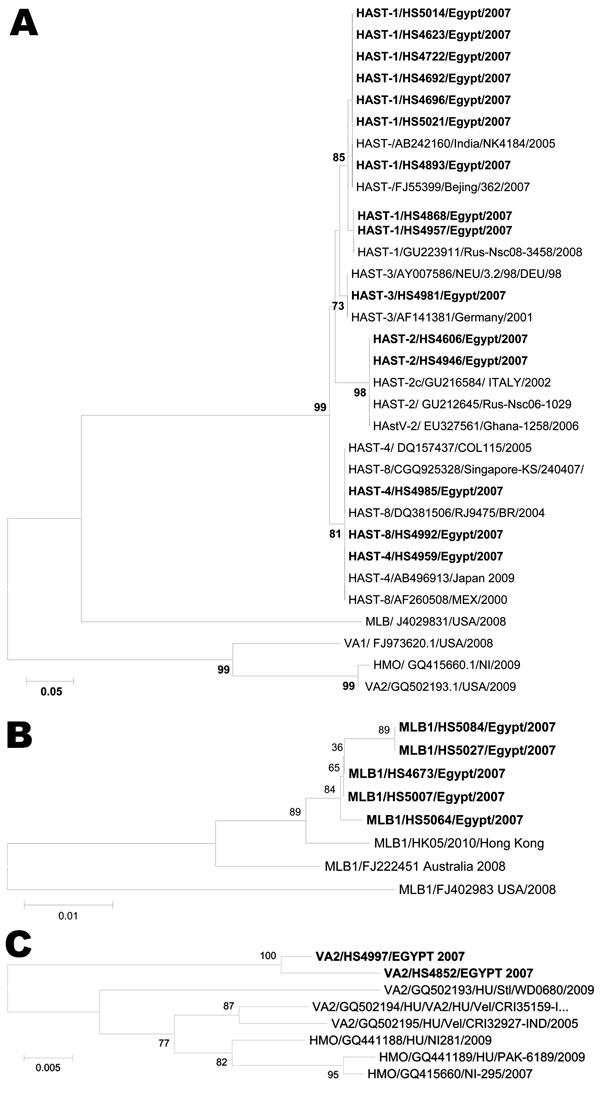Novel Astroviruses in Children, Egypt
Salwa F. Ahmed

, Peter J. Sebeny, John D. Klena, Guillermo Pimentel, Adel Mansour, Amel M. Naguib, Jody Bruton, Sylvia Y.N. Young, Lori R. Holtz, and David Wang
Author affiliations: US Naval Medical Research Unit No.3, Cairo, Egypt (S.F. Ahmed, P.J. Sebeny, J.D. Klena, G. Pimentel, A. Mansour, J. Bruton, S.Y.N. Young); Ministry of Health, Cairo (A.M. Naguib); Washington University School of Medicine, St. Louis, Missouri, USA (L.R. Holtz, D. Wang)
Main Article
Figure

Figure. A) Phylogenetic analysis of the partial amino acid sequences of the open reading frame (ORF) 2 capsid region of human astrovirus (HAstV) types I–VIII (using Mon primer) with other sequences from GenBank. B, C) Phylogenetic trees based on partial nucleotide sequences of MLB1 ORF2 (B) and ORF1b (VA2) (C). Egyptian isolates are shown in boldface. Sequence alignment was performed by using ClustalW in the BioEdit software package (www.clustal.org). Dendrograms were constructed by using the neighbor-joining method as in MEGA4 (www.megasoftware.net). Values on the branches represent the bootstrap values from 2,000 replicates. Scale bar in A indicates amino acid substitutions per site; scale bars in B and C indicate nucleotide substitutions per site.
Main Article
Page created: November 18, 2011
Page updated: November 18, 2011
Page reviewed: November 18, 2011
The conclusions, findings, and opinions expressed by authors contributing to this journal do not necessarily reflect the official position of the U.S. Department of Health and Human Services, the Public Health Service, the Centers for Disease Control and Prevention, or the authors' affiliated institutions. Use of trade names is for identification only and does not imply endorsement by any of the groups named above.
